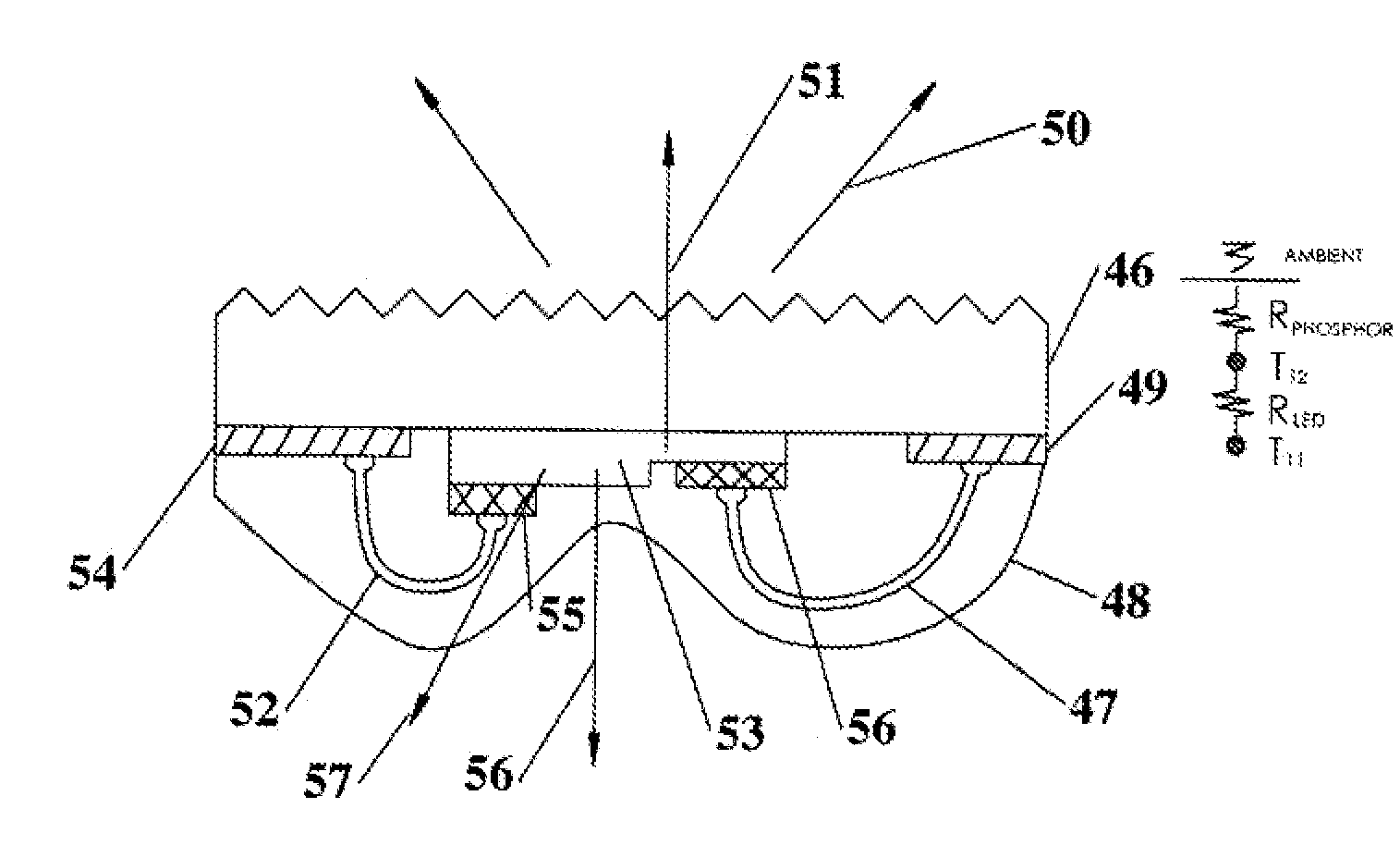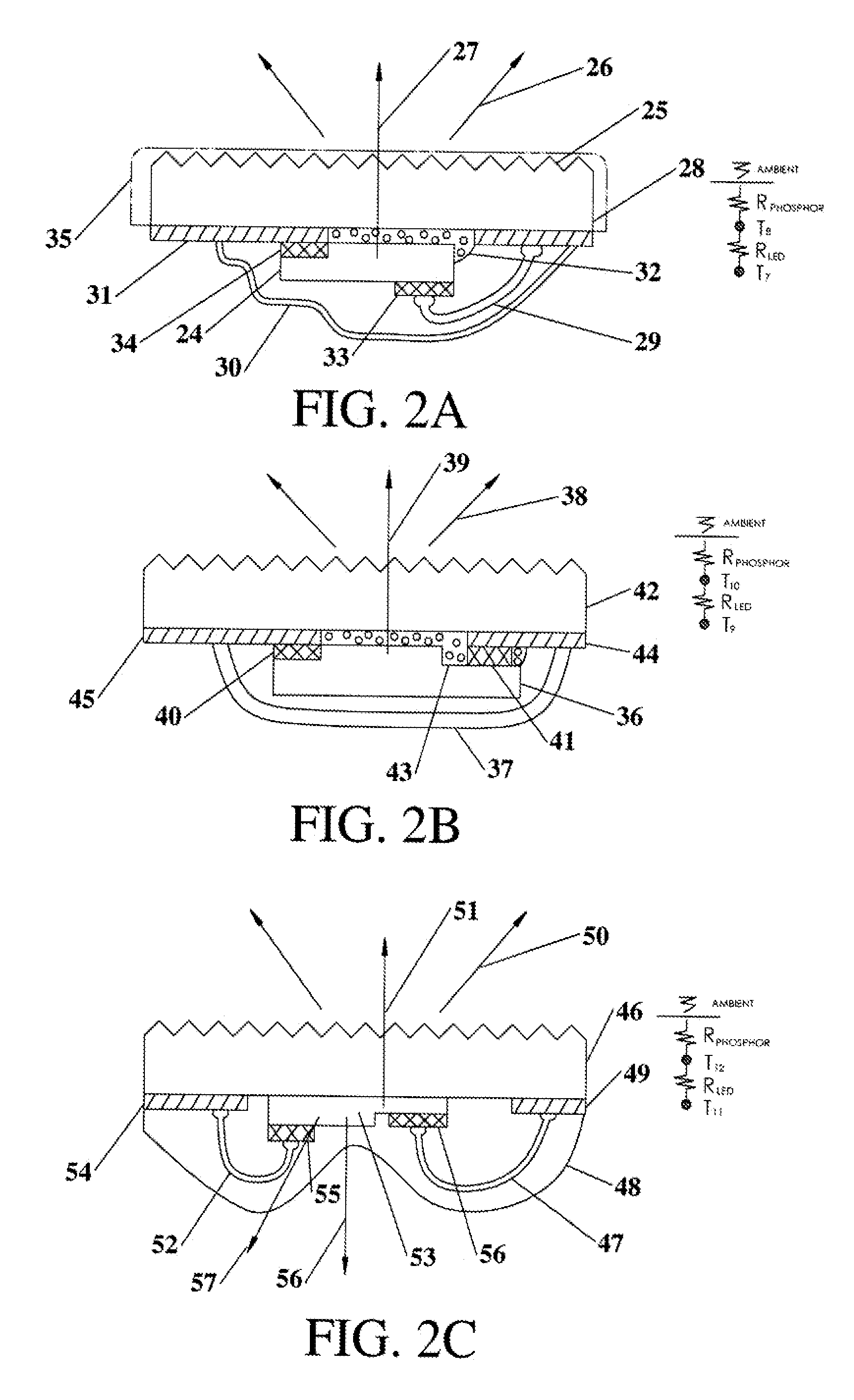Solid state light sources with common luminescent and heat dissipating surfaces
a technology of luminescent and heat dissipation surface, which is applied in the direction of semiconductor devices, light sources, lighting and heating equipment, etc., can solve the problemsrequiring more expensive processing, and most consumers are not willing to pay more. , to achieve the effect of reducing the cost of solid state light sources
- Summary
- Abstract
- Description
- Claims
- Application Information
AI Technical Summary
Benefits of technology
Problems solved by technology
Method used
Image
Examples
Embodiment Construction
[0037]According to the present invention as practiced herein, a conductive interconnect (transparent or reflective) is deposited on translucent thermally conductive elements (e.g. alumina (Al2O3), transparent alumina (TPA), Spinel, Sapphire, etc.) This can be done lithographically, or more preferred, via screen printing. LEDs or LEDs on surface mountable ceramic substrates (also referred herein as LED packages) are mounted (e.g. via soldering or conductive adhesives) to the interconnect on the translucent thermally conductive elements. It is preferred that the mounting method establish a low thermal resistant contact from the LED to the light transmitting thermally conductive element. Light emitted by the LEDs is directed to the thermally conductive translucent elements where it passes through and is emitted by the thermally conductive light transmitting (and thereby light emitting luminescent) element. The light transmitting thermally conductive elements have surface areas sufficie...
PUM
 Login to View More
Login to View More Abstract
Description
Claims
Application Information
 Login to View More
Login to View More - R&D
- Intellectual Property
- Life Sciences
- Materials
- Tech Scout
- Unparalleled Data Quality
- Higher Quality Content
- 60% Fewer Hallucinations
Browse by: Latest US Patents, China's latest patents, Technical Efficacy Thesaurus, Application Domain, Technology Topic, Popular Technical Reports.
© 2025 PatSnap. All rights reserved.Legal|Privacy policy|Modern Slavery Act Transparency Statement|Sitemap|About US| Contact US: help@patsnap.com



